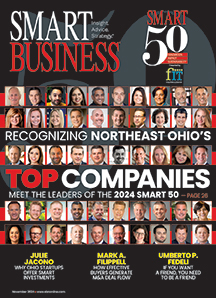In a competitive market, growth is key to success. Many a local retail store has been crushed by large conglomerates, but for those that have survived, steady growth has kept them afloat.
“The only way to survive is by spreading your overhead over as many locations as possible,” says Tom Luck, president of Lucky Shoes. “Hopefully, when you pick a location, it works and is profitable, so it gives you revenue to help offset the rising costs.”
Luck understands how to target the right locations to grow his business. Since its inception, his company has grown to 14 stores, including three under the Lucky Shoes name and 11 concept stores.
Luck has even opened multiple stores in one area.
“All our stores have different names over the door, but they all have the same focus and direction,” he says. “We use different names so we can open multiple stores in one complex, and we have at least two stores at every location. We want to give customers lots of choices.”
He relies on strategic planning and forecasting to determine when and where to add a store.
“We do a cash flow analysis and try to forecast what’s going to happen,” he says. “It costs a lot of money to open a store. You have to be sure you’re going to have the cash flow to afford to do it. You don’t want to jeopardize your business by growing beyond your capabilities and cash flow position.”
Often, growth is dictated by need.
“We know hospitalization rates are going to go up 15 percent every year,” Luck says. “We can’t raise our margins 15 percent, so we have to find some way to offset and continue to be profitable and grow.”
Opportunities to add locations come and go, but Luck doesn’t force the issue if it doesn’t pan out. For example, he wanted to open two stores at Legacy Village for a presence on Cleveland’s east side.
“We’re not able to make a deal, so it looks like we’re going to pass on it,” he says. “We’ll continue to look for locations on the east side of Cleveland to open stores, and when we find the right opportunity, we’ll do it.”
When scouting new locations, Luck looks at demographics to see if the ideal consumer exists in that location.
“The chamber of commerce usually has a lot of information, and if you’re a chamber member, it’s free,” he says. “There are also companies that will do a demographic study for a fee. If it’s a large project, the landlord will have already (done it.) Normally, if you’re negotiating with them, they’ll make that information available, because they want you to sign the lease.”
But even the best-laid plans can be hurt by forces out of your control. Within a year of moving in to City Center Mall in Columbus, the traffic pattern changed; two malls opened and office buildings were built near them.
“We had hoped to have all the office traffic at City Center, and then the office workers left,” Luck says. “So we didn’t look far enough into the future, and it was a valuable lesson. You also have to look at the future and ask, ‘What is the property going to be worth five years from now?’ and ‘Is this a place you want to be in five years?'”
And always have an exit strategy in case of a mistake.
“We were able to put a kick-out clause in the lease, a parachute that would allow us to get out of the lease. The lease isn’t up till 2010, and we’re closing this year,” says Luck. How to Reach: Lucky Shoes, (330) 836-5577 or www.luckyshoes.com

